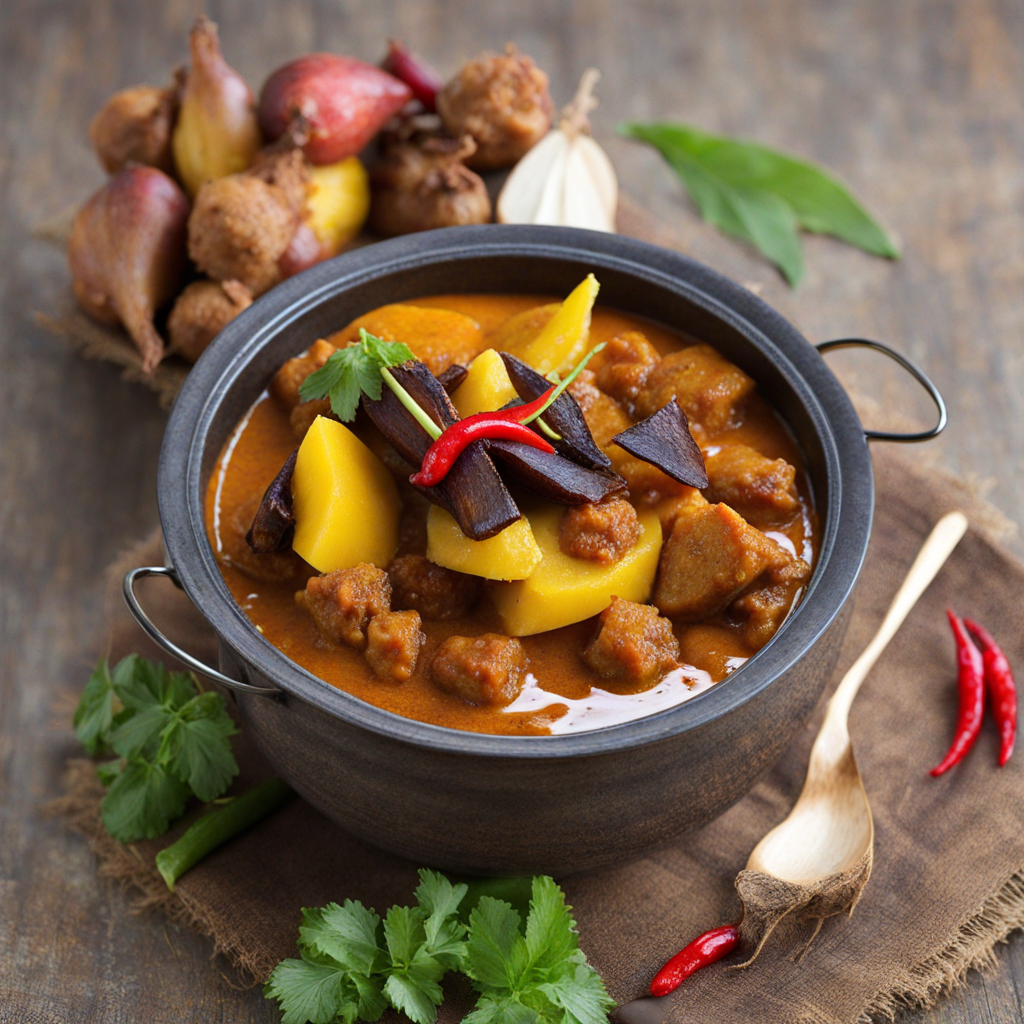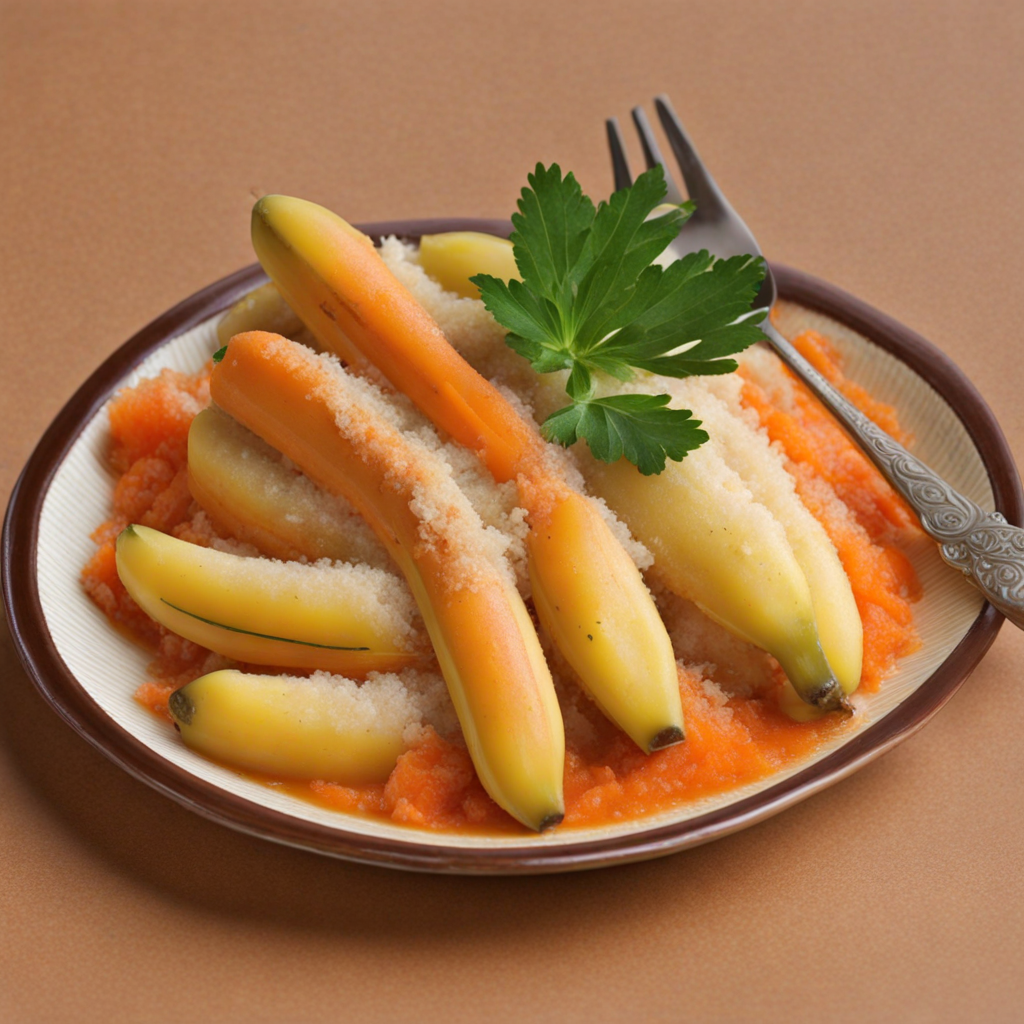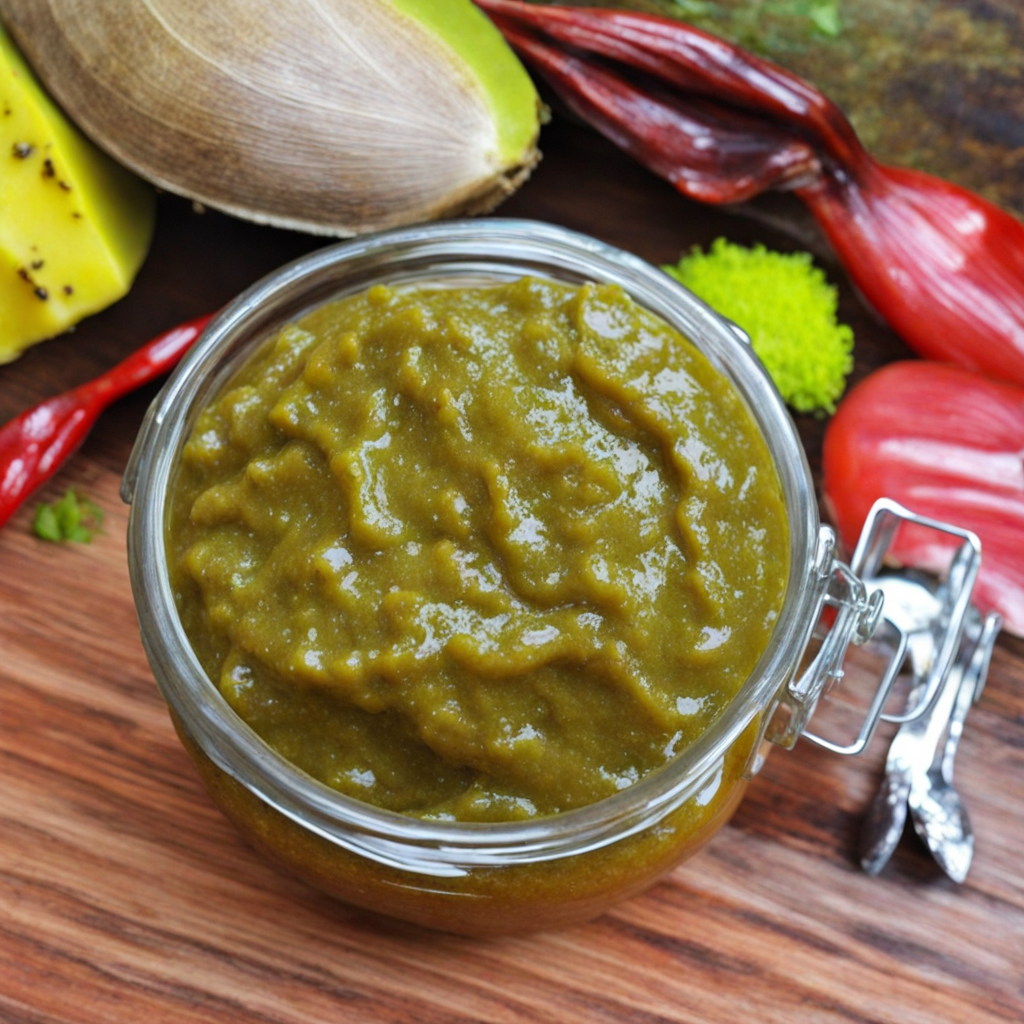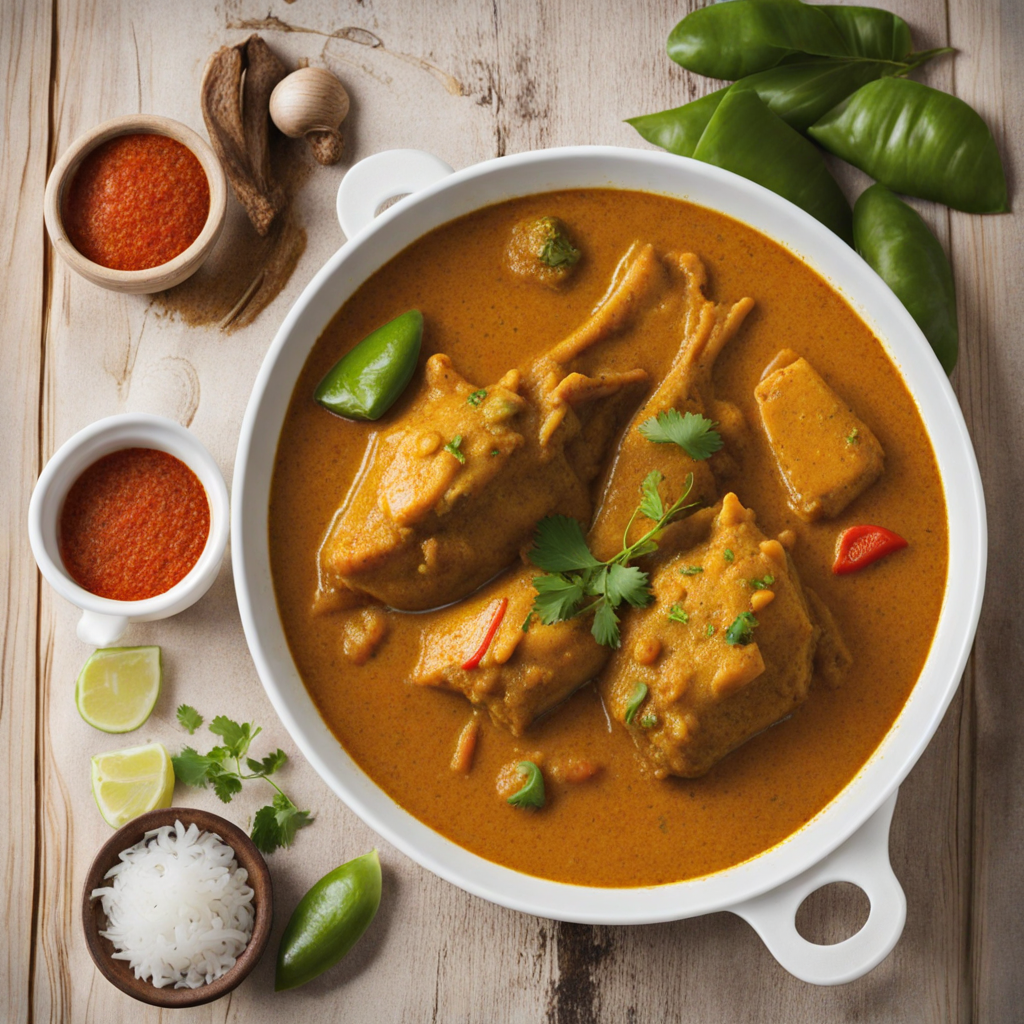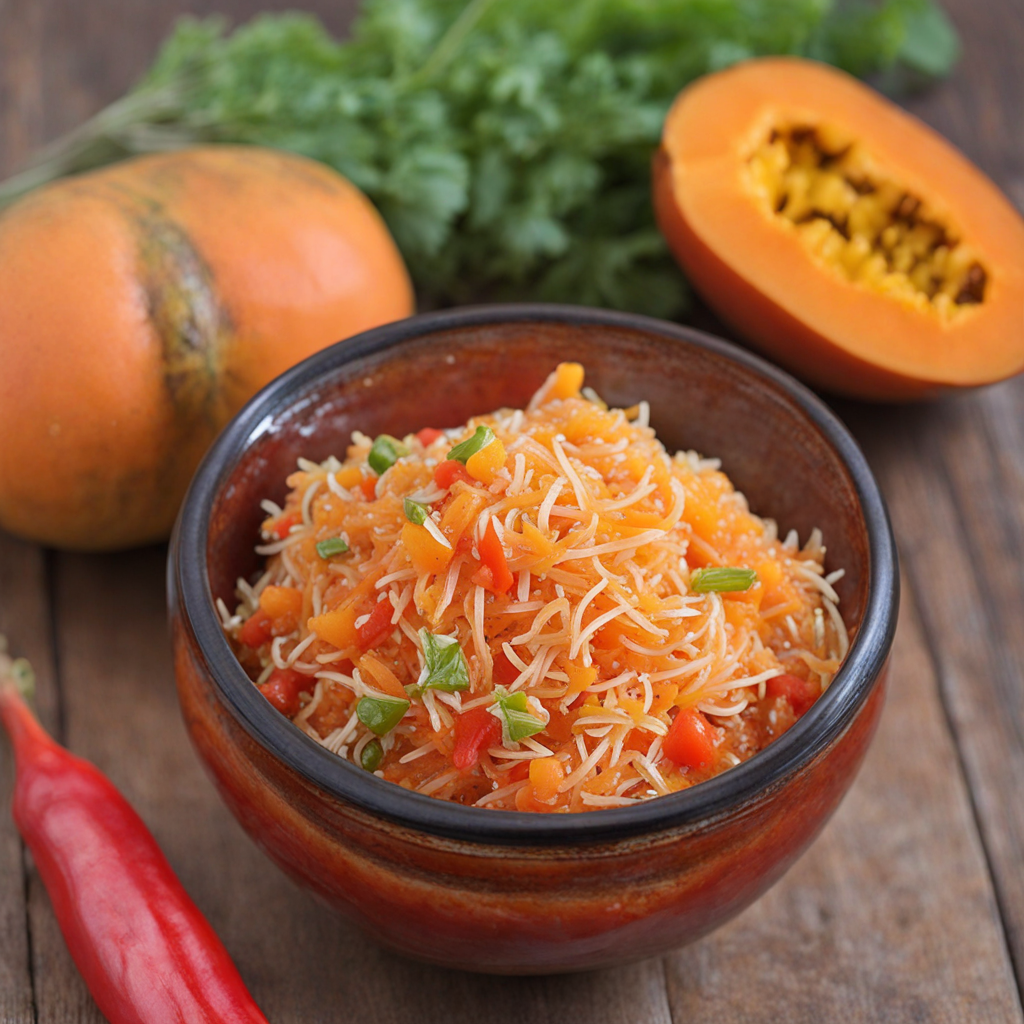Fruit Bat Curry
Fruit Bat Curry is a unique dish that embodies the rich culinary traditions of the Seychelles, where the blending of local ingredients and flavors creates a truly distinctive experience. The main ingredient, the fruit bat, is a delicacy in the region and is often praised for its tender meat and slightly sweet flavor, reminiscent of dark poultry. The bats are typically marinated in a medley of spices, including garlic, ginger, and a hint of turmeric, which not only enhance the dish's flavor but also reflect the vibrant spice culture of the islands. As the fruit bats simmer gently in the pot, they absorb the aromatic essence of coconut milk, which adds a luscious creaminess to the dish. The curry is often enriched with fresh produce, such as tomatoes, onions, and bell peppers, which lend a burst of color and additional layers of taste. The careful balance of spices and the creamy coconut base create a warm, inviting dish that is both comforting and exotic, making it a centerpiece for any meal. Served with fragrant rice or traditional flatbreads, Fruit Bat Curry is not just a meal but a celebration of the local culture and biodiversity. Diners are encouraged to savor each bite, as the flavors develop on the palate, revealing the complexities of the spices and the subtle sweetness of the bat meat. This dish invites adventurous eaters to explore the lesser-known culinary treasures of the Seychelles while honoring the island’s unique wildlife and cultural heritage.
How It Became This Dish
The Allure of Kari Sousouri: A Culinary Journey through Seychelles Kari Sousouri, a fragrant and flavorful curry, has emerged as one of the signature dishes of the Seychelles, an archipelago of 115 islands in the Indian Ocean. This dish encapsulates the rich tapestry of cultural influences that have shaped the culinary landscape of the Seychelles, reflecting the islands' history of migration, trade, and multiculturalism. To understand the significance of Kari Sousouri, we must explore its origins, cultural context, and evolution over time. #### Origins: A Melting Pot of Cultures The history of Kari Sousouri begins with the early inhabitants of the Seychelles, the Austronesians, who arrived over 1,000 years ago, followed by the first European settlers in the 18th century. French colonists, seeking new territories for sugar and spice cultivation, brought with them their culinary traditions, including the use of spices that would later influence local dishes. The French introduced curry powder, a blend of spices that became a staple in the Seychelles kitchen. As the islands developed, they became a melting pot of cultures. The arrival of Indian laborers in the 19th century, primarily brought in to work on plantations, significantly influenced Seychellois cuisine. Indian spices and cooking techniques were integrated into local dishes, including Kari Sousouri. The dish itself is thought to have derived from the Tamil word "kari," meaning "curry," which highlights the strong Indian influence. Kari Sousouri traditionally features fish, often the catch of the day, marinated in a blend of spices and coconut milk, providing a rich and creamy base. The use of local ingredients, such as fresh seafood, coconut, and spices, reflects the bounty of the surrounding ocean and lush vegetation, making it a quintessential dish of the islands. #### Cultural Significance: More than Just a Meal In Seychelles, food is an integral part of cultural identity and community life. Kari Sousouri, like many traditional dishes, serves as a bridge between generations, connecting families to their heritage and shared history. It is often prepared during family gatherings, celebrations, and festivals, emphasizing its role in fostering community bonds. The preparation of Kari Sousouri is often seen as an art form, where the skill of the cook is put on display. Each family may have its own variation, passed down through generations, allowing for personal touches and adaptations. This practice of sharing recipes and cooking techniques showcases the importance of oral tradition in Seychellois culture, where food serves as a medium for storytelling and remembrance. Moreover, Kari Sousouri is emblematic of the Seychellois ethos of embracing diversity. The blending of French, African, Indian, and Chinese influences in the cuisine reflects the islands' history of colonization, trade, and intercultural exchange. The different variations of the dish can be seen as a celebration of this multicultural identity, where ingredients and techniques from various cultures converge. #### Development Over Time: A Culinary Evolution As Seychelles has evolved, so too has the dish of Kari Sousouri. In the 20th century, with increased globalization and tourism, the culinary landscape began to change. The influx of tourists seeking authentic Seychellois experiences allowed local chefs to experiment with traditional recipes while still honoring their roots. Kari Sousouri was no exception; it started to gain recognition beyond local kitchens, becoming a staple on restaurant menus across the islands. In contemporary Seychelles, Kari Sousouri can be found in various forms, from home-cooked meals to fine dining experiences. While the traditional fish-based version remains popular, chefs have begun to adapt the dish for different dietary preferences, incorporating vegetarian and vegan options. Some have even experimented with different proteins, such as chicken or lamb, while maintaining the essence of the curry itself. The rise of food tourism has also played a critical role in the evolution of Kari Sousouri. Culinary festivals and events celebrating Seychellois cuisine have become increasingly popular, providing a platform for local chefs to showcase their interpretations of traditional dishes. This has led to a renewed interest in local ingredients, sustainable practices, and preserving traditional cooking methods, ensuring that Kari Sousouri remains a vital part of the islands' culinary heritage. #### The Modern-Day Experience of Kari Sousouri Today, enjoying Kari Sousouri is as much about the experience as it is about the dish itself. Visitors to the Seychelles can partake in cooking classes, where they learn to prepare this beloved curry alongside local chefs. These classes emphasize the importance of fresh, locally sourced ingredients, allowing participants to connect with the land and sea that sustain the islands. In homes, Kari Sousouri is often served with rice, lentils, or bread, making it a versatile dish that can accommodate various dining preferences. The communal nature of the meal encourages sharing and togetherness, further enhancing its cultural significance. Moreover, the global interest in Seychelles as a travel destination has led to a growing appreciation for its culinary offerings. Kari Sousouri has gained recognition on international platforms, showcasing the unique flavors of the Seychelles to a wider audience. This exposure has encouraged a new generation of cooks and chefs to explore and celebrate their culinary heritage, ensuring that the traditions surrounding Kari Sousouri continue to thrive. #### Conclusion: A Dish that Tells a Story Kari Sousouri is more than just a curry; it is a dish steeped in history, cultural significance, and evolution. It represents the confluence of various culinary traditions and the resilience of a community that has embraced its diverse heritage. As the Seychelles continues to develop and attract visitors from around the world, Kari Sousouri stands as a testament to the islands' rich gastronomic narrative. In every spoonful of Kari Sousouri, one can taste the stories of the past, the vibrant cultures that have shaped the islands, and the promise of a culinary future that honors tradition while embracing innovation. As it continues to evolve, Kari Sousouri will undoubtedly remain a beloved dish, cherished by both locals and visitors alike, serving as a flavorful ambassador of Seychellois culture.
You may like
Discover local flavors from Seychelles


